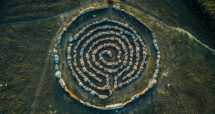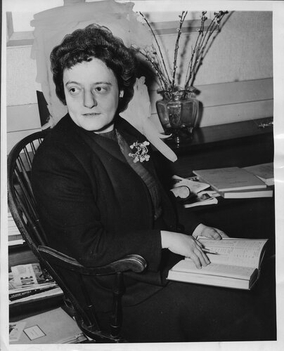The Riddle of the Labyrinth (Margalit Fox)

“This is the true story of one of the most mesmerizing riddles in western history and, in particular, of the unsung woman who would very likely have solved it, had she only lived a little longer”, begins Fox’s telling of the decipherment of Linear B. As with so many of the early, imaginative theories of the meaning of the Linear B script, however, this is less accurate and more enticing than the truth. Alice Elizabeth Kober’s role in the solving of this mystery was overshadowed, but not ‘unsung’ as was Rosalind Franklin’s role in the decipherment of the structure of DNA, for so long. (Fox wisely never draws the comparison). As Fox herself says, “Kober was by the mid-twentieth century the world’s leading expert on Linear B.”
Kober (1906-1950), an overworked American academic (see below) whom Fox calls “The Detective,” is the central figure of three in this – yes – mesmerizing book. In 1900 Arthur Evans, “The Digger” (how he would loathe that title!), a famed British archaeologist, unearthed an immense Bronze Age building on the island of Crete. He concluded that it was the palace of King Minos, home to the Minotaur. Most importantly, he found thousands of clay tablets inscribed with a hitherto unknown writing and preserved by fire. At that time they were Europe’s earliest written records. Evans and his successors sat on them, releasing only a few inscriptions to scholars desperate to attempt the decipherment.

Kober set to work on the copies of inscriptions which she did have, learning other languages first, to assist. The work involved is mind-boggling. Having determined that Linear B is a mainly syllabic language, “[s]he catalogued the frequency of each character, of course, but she catalogued a great deal more than that. She noted the frequency of each character in any position in a word, (initial, second, middle, next-to-last, and final); the characters that appeared before and after every sign; the chances of a given character’s occurring in combination with any other character; repeated instances of two- and three-character clusters; and much else.” By the time of her death in 1950 at the age of 43 she had filled 180,000 index cards hand-made due to wartime shortages). To those with some knowledge of an inflected language – such as Latin or Ancient Greek – the explanation of Kober’s method, determining “the complex interlacements between the Minoan language and the Minoan writing system” will be particularly fascinating, but it’s a must-read for anyone at all interested in puzzles, writing and language.
Then, as every schoolboy knows, in 1952 architect Michael Ventris (“The Architect”, son of architects who went to Carl Jung personally for child-rearing advice) published his findings – a decipherment of Linear B*. He had had the benefit of the work of Kober and others but, curiously, at the eleventh hour, only made the breakthrough when he reluctantly abandoned his certainty that Linear B was not a form of Greek. Ventris has of course been lauded for this final push, at the expense of Kober (and others who worked on the script).
Kober dies aged 43; Ventris dies aged 34. Perpetually hunching over stone tablets makes one sick or dangerously tired, obviously.
After all that, what do the tablets tell us? “There are no grand narratives lurking in Linear B – no epic poems, no romances, no tales of gods and their derring-do.” They are the administrative and economic records of a Mycenean state, some 3,000 years ago. “Their account books, set in clay and baked in unintended fire, tell us what they sowed and reaped, what they ate and drank, the names of the gods they worshipped…how they earned their keep, how they passed their time, how they defended themselves and made war”. And that’s a great deal. Fox quotes the American newspaperman Murray Kempton on the difference between criminal and civil proceedings – “The Criminal Courts can only tell us the way some of our sisters and brothers steal or kill or die. But the Civil Courts tell us the way all of us live”.
- See “The Decipherment of Linear B” by John Chadwick.

Leave a comment...
While your email address is required to post a comment, it will NOT be published.


0 Comments